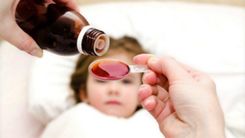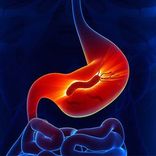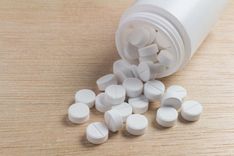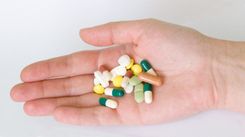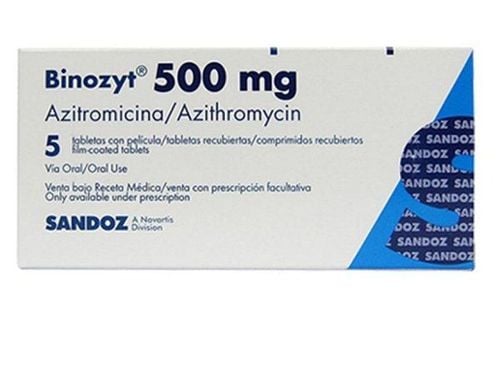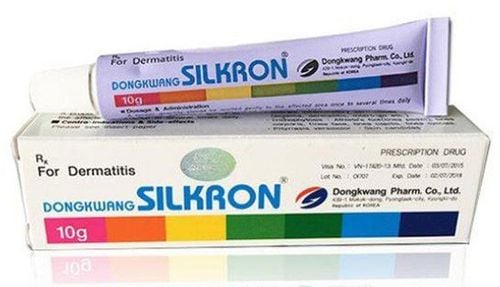Amoksiklav 625 drug belongs to the group of antibiotics known as penicillin combinations. It is a broad-spectrum antibiotic that is effective against many different types of bacteria. Amoksiklav 625 is made up of two drugs: Amoxicillin (the active ingredient of antibiotics) and Clavulanic acid (which increases the effectiveness of amoxicillin). It is commonly prescribed to prevent middle ear and sinus infections, respiratory tract infections in the throat or lungs, urinary tract infections, skin infections, soft tissue infections, oral infections, and bone and joint infections.
1. What is Amoksiklav 625?
Amoksiklav 625 is an antibiotic used to treat various infections caused by bacteria, such as sinus infections, urine infections, skin infections, joint infections, and some infections. dental infection.
It works by killing or stopping the growth of bacteria and eliminating the infection. Amoxicillin clavulanic acid belongs to a group of antibiotics known as penicillins. Like all antibiotics, it is not effective against infections caused by viruses.
2. Uses of the drug Amoksiklav 625
Amoksiklav 625 contains two different medicines, Amoxicillin and Clavulanic Acid that work together to kill the bacteria causing the infection. Amoxicillin works by stopping the growth of bacteria. Clavulanic acid reduces resistance and enhances the action of Amoxicillin against bacteria.
Amoksiklav 625 medicine is used to treat many different bacterial infections such as ears, sinuses, throat, lungs, urinary tract, skin, teeth, joints, bones. Medicines usually make you feel better within a few days, but you should continue to take them as prescribed even if you feel better to make sure all bacteria are killed and not becoming resistant. medicine.
3. Dosage when taking medicine
Amoksiklav 625 is available as 625mg tablets.
The dose of Amoksiklav 625 will be different for different people depending on the type of infection and your age.
- Adults: The usual dose in adults is 1 tablet x 3 times a day.
- Children: The dose for children will depend on the child's body weight. It is usually given 3 times a day.
Your doctor will advise you how long to take the medicine (usually 3 to 10 days).
4. How to take medicine
Timing: the drug is usually taken 3 times a day. Try to spread out the doses evenly throughout the day, such as first thing in the morning, early afternoon, and before bed. Taking the medicine with or after food helps to keep the stomach safe.
Tablets: Swallow the tablet whole with a glass of water.
Missed dose: If you forget to take your dose, take it as soon as you remember. However, if it is almost time for your next dose, take your next dose at the right time.
If you vomit: If you vomit less than 30 minutes after taking a dose, take the same dose again. However, if you vomit and it is more than 30 minutes after taking a dose you do not need to take another dose. Wait until the next normal dose.
Alcohol: You can drink alcohol while on medication. Avoid drinking a lot of alcohol as it can increase your risk of side effects like nausea and vomiting.
End of course: Take the whole course of antibiotics within the number of days that your doctor has ordered. Do not stop taking the medicine, even if you feel your infection has cleared up. If you stop treatment early, your infection may return.
5. Possible side effects of the drug
Like all medicines Amoksiklav 625 can cause side effects although not everyone gets them.
5.1. Allergy
Tell your treating doctor if you have had an allergic reaction to a medicine, especially the antibiotic penicillin. Allergy to penicillin is actually very rare - less than 5 out of 10,000 people are allergic to penicillin. Most people who think they are allergic to penicillin are not.
If you develop allergic reactions such as skin rash, itching, swelling of the lips, face and mouth, or difficulty breathing, stop taking Amoxicillin and seek immediate medical attention.
5.2. Other side effects
- Nausea (feeling nauseous) or vomiting.
- Diarrhea (loose, watery stools).
- Vaginal itching, soreness, or discharge (thrush).
- Signs of jaundice such as yellowing of the eyes, skin, stomach pain, dark urine
- Allergic reactions such as skin rash, itching, swelling of the lips, face and mouth, or difficulty breathing.
6. Drug interactions
Your doctor or pharmacist may already be aware of any possible drug interactions and can monitor you for them. Do not start, stop, or change the dosage of any medications before testing them against methotrexate, tetracyclines. Before taking this medicine tell your doctor or pharmacist if you are also taking probenecid. Probenecid slows down the removal of Amoksiklav 625 from your body, resulting in higher levels of this antibiotic in your blood. For some difficult-to-treat infections, your doctor may prescribe these two drugs together to be effective.
This medicine may decrease the effectiveness of combined oral contraceptives. This can lead to pregnancy.
This antibiotic may cause false positive results with some diabetic urinalysis products (cupric sulfate type).
7. Be careful when taking medicine
Before taking this medicine tell your doctor or pharmacist if you are allergic to it or to penicillin or cephalosporin antibiotics or if you have any other allergies.
This medicine should not be used if you have certain medical conditions. Before using this medicine, consult your doctor or pharmacist if you have:
- History of liver problems (such as cholestatic jaundice) that have occurred with the use of amoxicillin - acid clavulanic acid earlier.
- Liver disease, kidney disease a certain type of viral infection (infectious mononucleosis). Kidney function declines as you age. Therefore, the elderly may be more sensitive to this drug.
- This medicine should only be used when clearly needed during pregnancy. Caution is advised if this medicine is taken before delivery for a certain condition (premature rupture of membranes) due to possible increased risk of harm to the newborn baby.
8. Some notes when taking drugs
Taking digestive medicine should be done after taking a full dose of Amoksiklav 625 to restore some of the healthy bacteria in the intestinal tract that may have been destroyed. Taking probiotics after antibiotic treatment may reduce the risk of antibiotic-associated diarrhea. Certain fermented foods like yogurt, cheese, sauerkraut, kombucha, and kimchi can help restore beneficial bacteria in the gut.
Include more fiber-rich foods in your diet, as your gut bacteria can easily digest them, helping to stimulate their growth. Therefore, foods high in fiber can help restore healthy gut bacteria after a course of antibiotics. Whole grains like wholemeal bread and brown rice should be included in your diet.
Avoid alcoholic beverages with Amoksiklav 625 as it can dehydrate you and can affect your sleep. This can make it difficult for your body to support Amoksiklav 625 in fighting the infection.
Amoksiklav 625 is better to take with meals as it can lead to stomach upset.
To prevent throat irritation, take Amoksiklav 625 in an upright position. Do not lie down for at least 30 minutes after taking the medicine.
Even if you feel better after taking Amoksiklav 625, do not stop taking it until your doctor tells you to. This can cause symptoms to reappear and make infections difficult to treat due to antibiotic resistance.
Make sure you drink plenty of water when you're sick. All in all, this will help you clear your infection faster, protect you from dehydration, and help you overcome some of the nasty side effects of taking Amoksiklav 625.
Some people may be allergic to Amoksiklav. 625 or other penicillin or cephalosporin antibiotics. Therefore, a prior sensitivity test may be necessary. Inform your doctor if you are allergic to any medicines, especially antibiotics of these groups.
If you feel nauseous after taking Amoksiklav 625 eat simple meals like porridge, khichdi, dal roti and other homemade meals. Avoid spicy and fatty foods.
Please dial HOTLINE for more information or register for an appointment HERE. Download MyVinmec app to make appointments faster and to manage your bookings easily.
